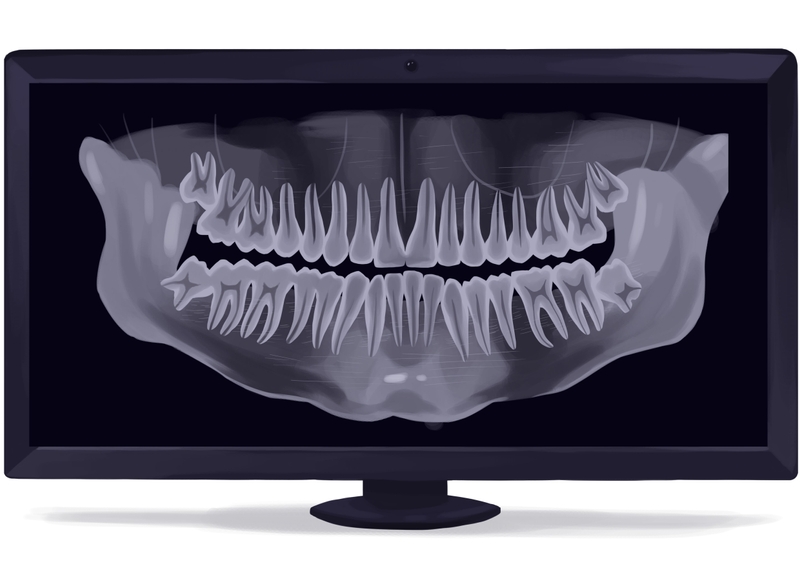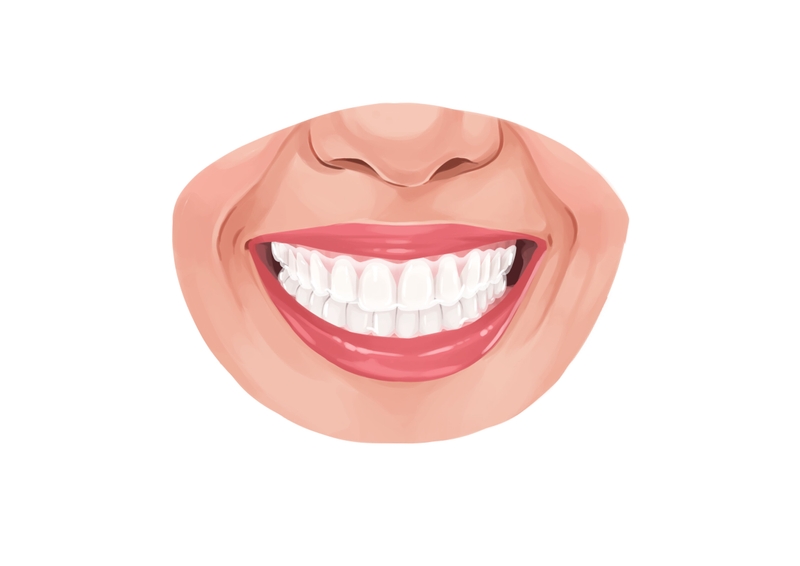- The most common Invisalign package costs $5,700 on average. The available packages are Full, Teen, and Express.
- The cost depends on the severity of the dental problem, the condition of the teeth, the length of treatment and the number of aligners. The dentist's experience and specialization also determine the price.
- Invisalign is usually considered a cosmetic procedure. Dental insurance may not cover the treatment, even if it provides orthodontic benefits.
Use Authority Dental to search for dentists open near you or get a dental discount plan to save big on all procedures, including orthodontics.
Need an estimate for Invisalign? Here's everything you need to know.
Average cost of Invisalign without insurance

Picture by Authority Dental under CC 2.0 license
The three most common Invisalign packages are Full, Teen, and Express. The Invisalign cost without insurance ranges from $1,800 to $9,500.
| INVISALIGN PACKAGE | AVERAGE COST | COST RANGE |
|---|---|---|
| Full | $5,700 | $3,500-$9,500 |
| Teen | $3,000 | $2,000-$5,000 |
| Express | $2,400 | $1,800-$3,000 |
There are in-between solutions (such as Invisalign Assist) and the list keeps growing. Your provider will be able to advise best which package is right for you.
The cost of Invisalign near you depends on several factors, much like in the case of conventional braces. The biggest ones are:
the severity of your issue,
the condition of you teeth,
the length of the treatment,
the numbers of aligners necessary,
the experience of the dentist, and
your dentist’s specialization (an orthodontist might charge a little more than a regular dentist).
Since more often than not, invisalign is a cosmetic procedure, rather than a health-related treatment, most dental insurance plans do not cover such treatment, even if it brings an orthodontic benefit. This can make it a quite expensive option when compared to other alternatives.
Nonetheless, Invisalign aligner treatment is among the best options for a crooked tooth. So if you want to go ahead with this procedure you can always see what your dental insurance can cover and combine it with a payment option if your credit score is in good condition.
Associated costs of Invisalign

Picture by Authority Dental under CC 2.0 license
Some of these procedures might be included in the price of your package if your dental insurance plan covers it, especially if you decide to go for the Invisalign Full or Invisalign Teen option. It is always a good idea to ask your dentist directly, though.
Initial consultation
If you are interested in getting invisible braces, you should start by setting up an appointment with an Invisalign provider. This might be either a general dentist (perhaps your regular one) or an orthodontist.
Such a consultation is a great opportunity to ask all questions to do with costs, payment plans, frequency of subsequent visits, and how Invisalign works in general. You will be instructed as per what you are going to have to do at home.
Your dentist will assess which package is right for you. You may also want to check if they offer a monthly payment plan or a personal loan.
The first consultation may cost between $100 and $300, although some clinics offer it for free.
iTero
iTero is an intraoral scanner that takes thousands of pictures to create a 3D model of your mouth. This model is used to plan out your treatment and predict the result. The procedure typically costs between $100 and $300, but it is likely to be included in the cost of your package.
The device goes in your mouth, and a digital image of it will show up on the screen. This accurate digital representation will ensure the trays fit perfectly.
This technology is owned by Invisalign. There are also other intraoral scanners that can be used. Not all providers will have such a scanner, however, so you may have a diagnostic cast or an X-ray instead (or in addition).
Diagnostic casts
In order to visualize the situation in your mouth your provider might want a diagnostic cast, sometimes referred to as a study model. Some find this very uncomfortable, but it is still a popular procedure at the dental office.
Your jaw will be moved to a centric, relaxed position. A cast of your mouth will be made by pressing impression putty into your teeth. This has to be done for each arch.
The putty will harden and it will be sent off to a lab. A cast of dental stone will be made. It is going to look like your teeth and gums and helps make comfortable aligners.
This procedure is usually included in the total cost of Invisalign.
Dental X-rays
Invisalign doesn’t require an X-ray per se, but many orthodontists like to do at least one before performing any orthodontic work. Some might also be taken after. The costs of dental radiographs are something you have to consider with braces, too.
X-rays help the dental professional see what orthodontic problems you are dealing with. They also show whether the patient’s teeth and gums are healthy enough for orthodontic treatment. They help plan out the process and predict the results.
During an Invisalign treatment you can expect:
a panoramic radiograph,
an FMX, or
a cephalometric X-ray.
Refinement
Sometimes the end result is not exactly what was predicted during the initial part of the process. This can happen even if patients follow the Invisalign provider’s instructions very carefully and take their oral health very seriously.
The mouth is an organ system and it is impossible to foresee the results perfectly every time. Moreover, some things can hinder the process, for example:
not wearing aligners properly,
not wearing aligners for at least 22 hours a day,
losing aligners and not getting replacements right away,
not wearing aligners for a long period of time due to an illness or accident,
using broken or cracked aligners,
complex movements of difficult teeth, and
genetically slow movement of dentition.
During one of your last visits, especially if the results differ greatly from what was expected, the dentist might say you need refinement. This happens in about a third of cases. New scans will be made and another treatment plan will be devised. You will get additional trays.
Refinement usually adds about three months to the treatment. The costs of refinement start from $300 and can surpass $1,000. It’s a good thing to consider when choosing your package: it’s kind of like a fail-safe.
Retainers
The final stage of the Invisalign treatment after getting an attachment glued to some of your teethis wearing retainers to “retain” the new alignment. This prevents teeth from shifting back to their original places.
Invisalign has its own brand: the Vivera retainers. They can be a little more expensive but are said to be twice as durable and thirty percent stronger than other kinds. Vivera includes an extra set with each order.
For the first few weeks, you will have to wear your retainers for 22 hours per day, just as you did the trays. Later on, you will only wear them at night. Every case is different, though.
The price of Invisalign retainers usually varies between $300 and $800. It is typically not included in the price of the treatment.
Does dental insurance cover Invisalign?

Picture by Authority Dental under CC 2.0 license
On the Invisalign website, it is stated that insurance coverage can go up to $3,500. According to our research, however, providers rarely cover more than $2,000. Policies tend to cover more when the issues are more severe, making alignment “medically necessary”.
Blue Cross, for example, will only cover treatment of alignment issues when they cause pain, jaw clicking, or impaired speech. And that’s only for pediatric patients, meaning you have to be under 18.
Cigna, on the other hand, covers orthodontia under “Cigna Dental 1500”, but has a lifetime cap of $1,000. That means that under no circumstance will they reimburse you for any higher amount.
Insurance policies that cover orthodontic work sometimes do have higher maximums, though. Some go up to the aforementioned $3,500, rather than the usual $1,000-$1,500. They do tend to be lifetime caps however, and not “yearly” ones, as for preventive and basic dental care.
You may be able to get coverage for associated costs that may turn out necessary before, during, or after Invisalign treatment.
There are other solutions to save money, even if insurance doesn’t cover your treatment or when the yearly cap is reached. Dental discount plans are the option we recommend for affordable dental care. They work kind of like a membership and offer discounts on all dental work.
You can save as much as 60% of the total cost. You won’t need to worry about any paperwork or waiting periods. You can even sign up during treatment to enjoy reductions. The plan is active from the moment you sign up.
FAQ
How to get Invisalign?
To get Invisalign, you will need to visit a certified Invisalign provider, who can be either a dentist or an orthodontist. Based on the oral examination and imaging, your doctor will create a personalised treatment plan and order custom-made Invisalign aligners for you.
Is Invisalign cheaper than braces?
It depends on the situation in your mouth and which package you purchase from Invisalign, but braces tend to be more expensive on average. This is especially true if your heart is set on porcelain or lingual braces. Overall, the costs are comparable.
What is the average cost of Invisalign for adults?
The price of Invisalign for adults depends on the type of treatment.
For minor issues like mild spacing or touch-ups, you can opt for Invisalign Express, the most affordable option, priced at $2,500–$3,500. Moderate crowding is treated with Invisalign Lite, which can cost up to $5,000, while Full Invisalign Treatment, suitable for more complex corrections, can cost up to $7,000.
In the most severe cases, patients may require Advanced or Refinement Plans, which can exceed $8,500.
Why is Invisalign so expensive?
Invisalign treatment is both extremely customized, long, and requires a lot of facetime from your dentist or orthodontist. Other aligner companies usually work remotely on a larger scale, which lets them cut costs.
Additionally Invisalign owns a lot of patented technology. Choosing them, you’re paying for the brand and verified quality.
Are there cheaper Invisalign alternatives?
Invisalign is not the only way to go if your teeth need re-aligning. There are a lot of home-teeth straightening kits on the market. Those are not only cheaper but offer payment plans with fees under $100 a month.
The treatment is typically shorter than Invisalign, but there is less specialist support and guidance.
References
- Precision of intraoral digital dental impressions with iTero and extraoral digitization with the iTero and a model scanner
- Invisalign cost
- Orthodontics for Pediatric Patients
- Plans insured by Cigna Health and Life Insurance Compan
- Optimising clear aligner therapy: What current evidence says about materials, attachments, and protocols
Richard Hattaway, DDS
Working with the bone and biology in mind can only be accomplished with a proper dental exam and recent (within the last 3-6 months) X-rays.